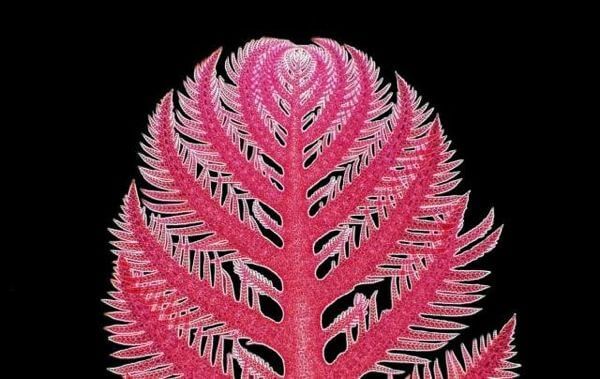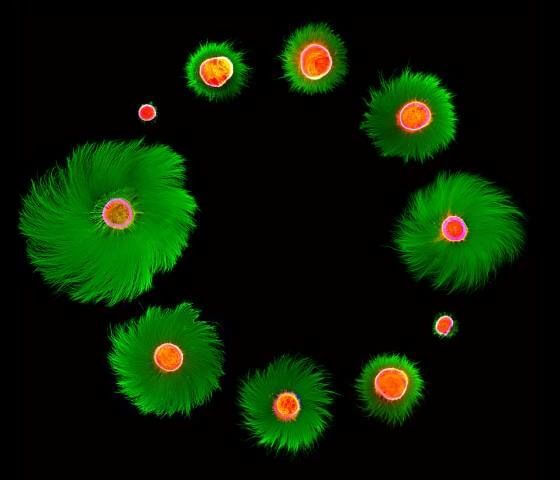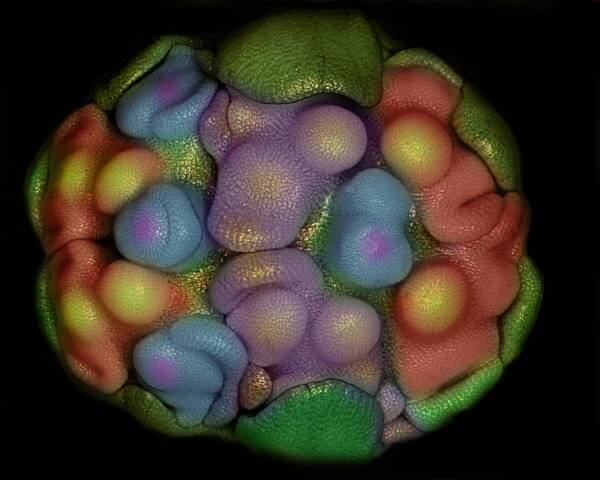Why do we love the annual Nikon Small World Photomicrography Competition? Because it gathers art, science, and technology into one tiny room and reminds them how much they have in common. And of course, the competition unerringly shows off some awesomely alien images of the microscopic world.
We’ve assembled some of our favorites from the 2012 Nikon Small World Competition below. Readers can view the entire 2012 collection and every collection back to the competition’s inception here. Or you can see them in person if you’re lucky enough to live in one of cities the Exhibit Tour will visit in late 2012 and throughout 2013.
Up first is 2012’s winner by Dr. Jennifer L. Peters and Dr. Michael R. Taylor. This photomicrograph marries form and function—the rainbow palette makes a 3D map of a live zebrafish embryo’s blood-brain barrier by assigning depth to each color. According to Dr. Peters the image “not only captures the beauty of nature, but is also topical and biomedically relevant.”















